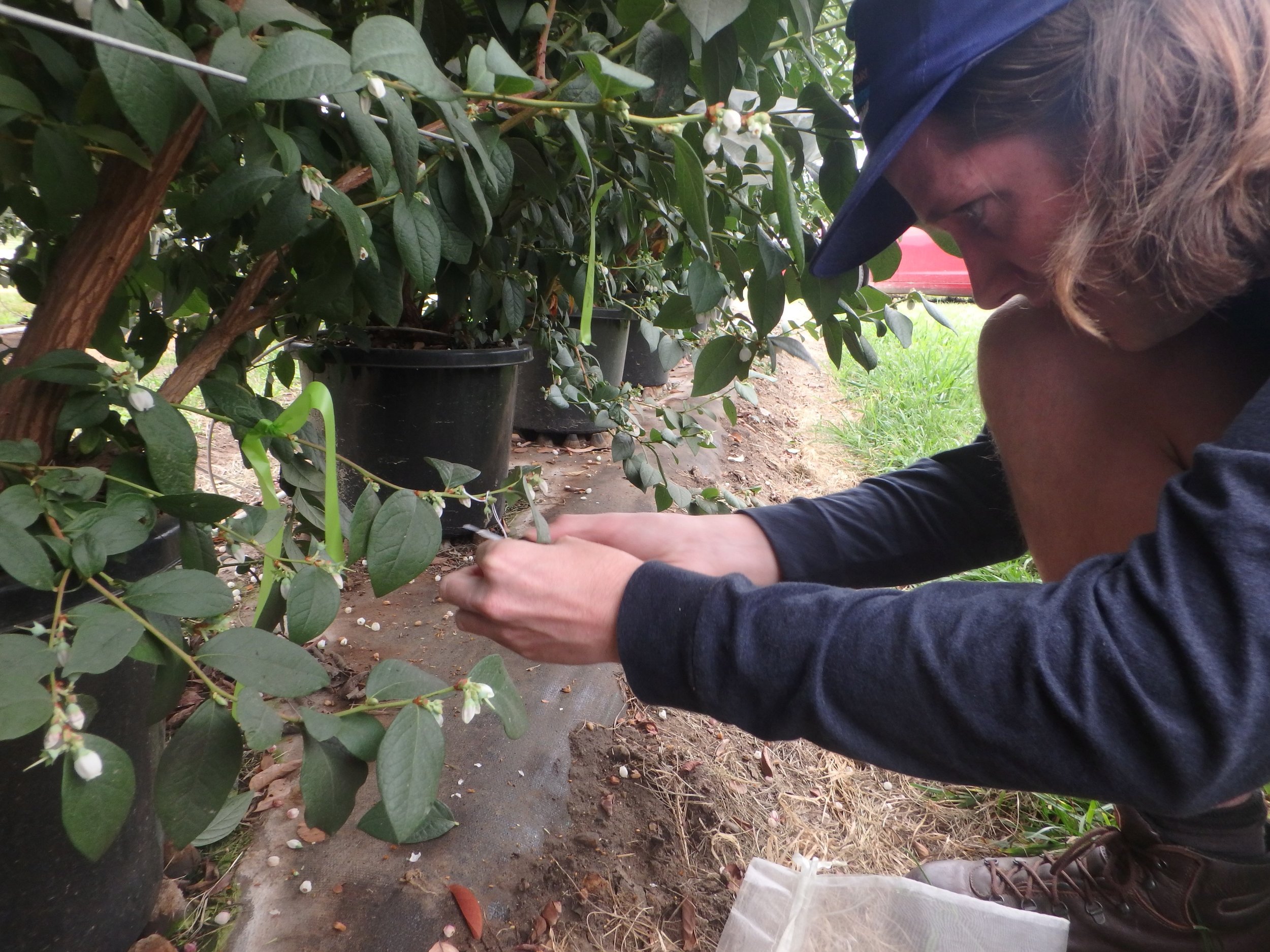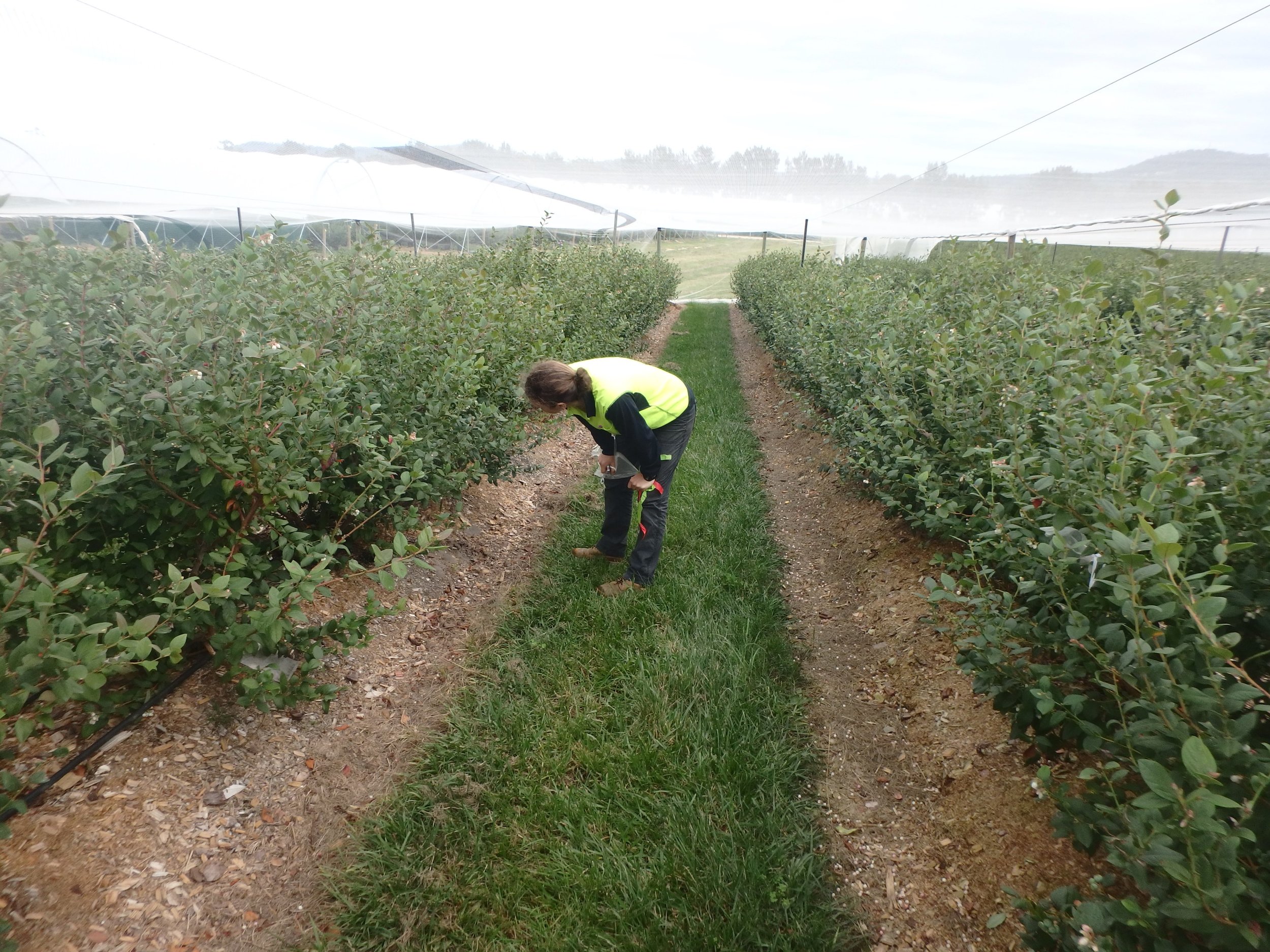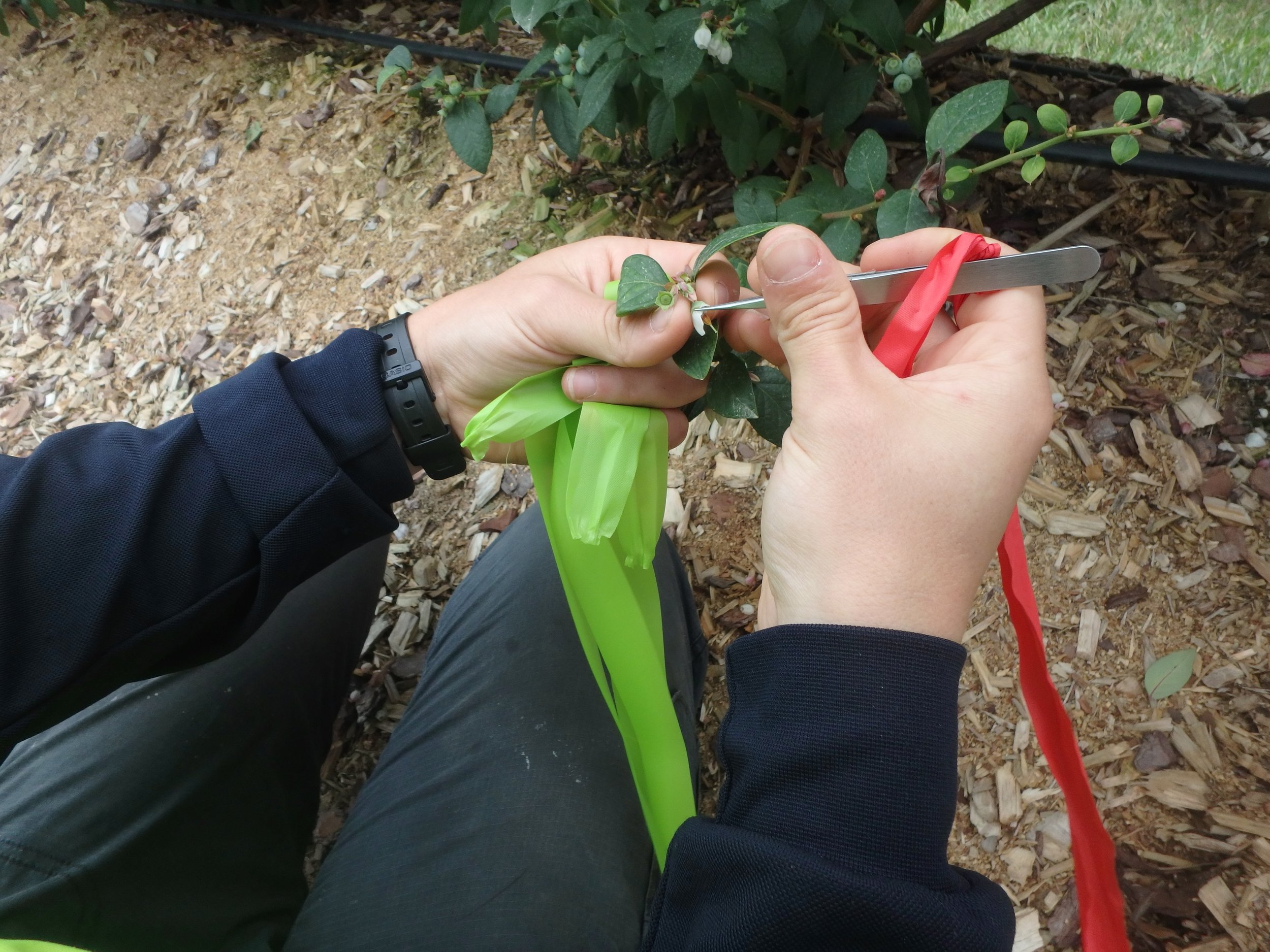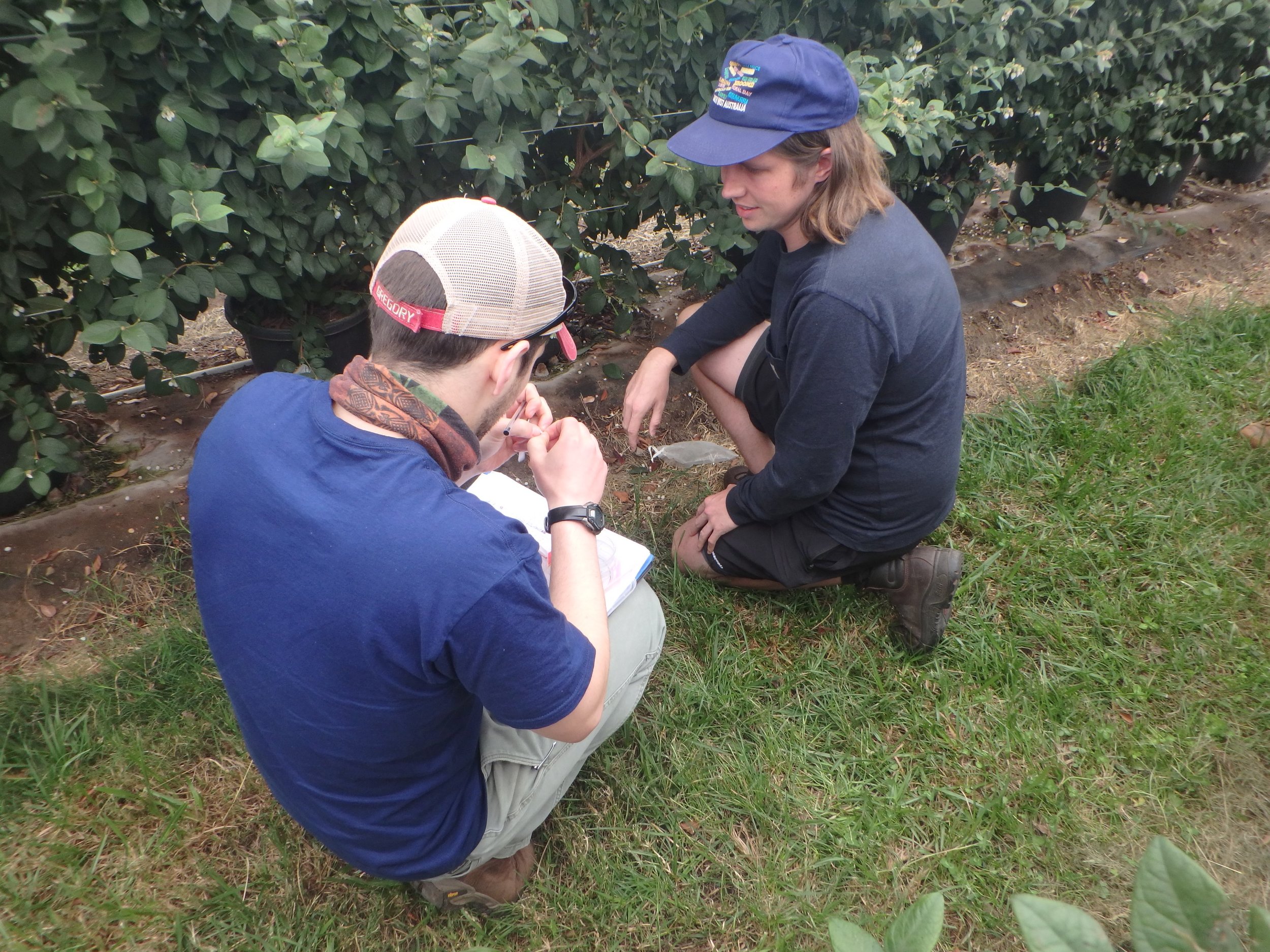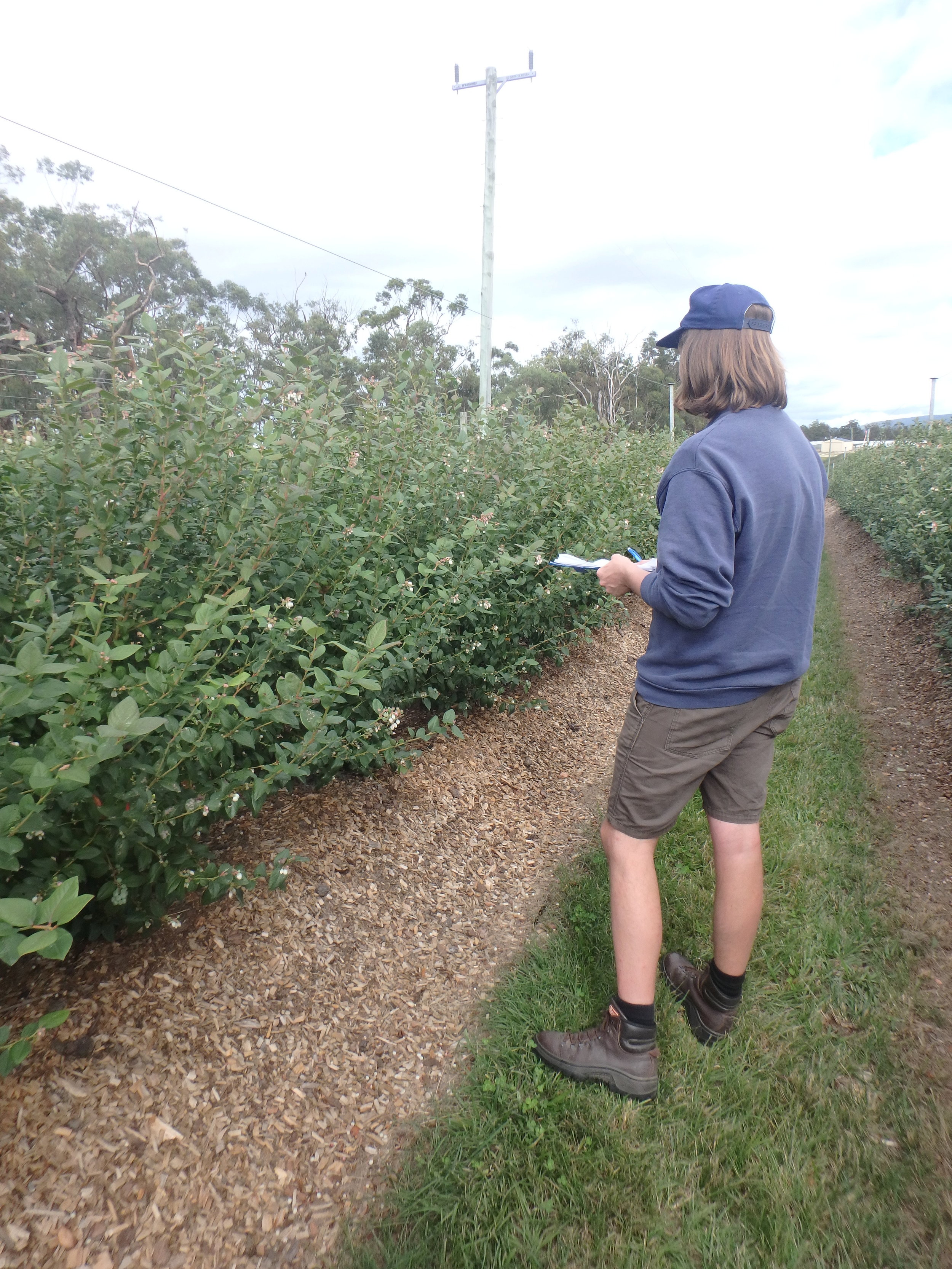Some of the Rader Lab team, led by PhD student Liam, are working in the blueberry growing region on the beautiful north coast of New South Wales coast as part of our fruit crop pollination project. The evergreen blueberry varieties here are in flower from April through to June/July. The main purpose of this field work is to establish a link between pollinator efficiency (floral visit number and composition - including species order) and fruit set and quality. We have also been assessing bee and hoverfly diversity in and around blueberry farms. So far we have found roughly 15-20 bee species in the vicinity of blueberry farms. Interestingly, these bees (including native blue-banded bees, teddy bear bees and leaf-cutter bees) have no interest in blueberry flowers – instead they love the flowering weeds (eg. farmer's friend Bidens pilosa)!
Horticulture industry connections
Bryony was in Adelaide earlier this week to present at HortConnections 2017 as part of the Precision Agriculture Research Group. The presentation team included two other PhD students (Surantha Salgadoe and Aaron Aeberli) and Research Fellow Jasmine Muir, and their presentation was titled "Emerging technology for managing Australian tree crops". The team are all part of the "Multi-Scale Monitoring Tools for Managing Australian Tree Crops- Industry meets Innovation" project being led by Assoc. Prof. Andrew Robson (UNE). Bryony spoke about her own PhD project and the work being done by other collaborators on the project.
Bryony has also just had a paper accepted in Current Opinion in Insect Science - stay tuned to find out when it's available online!
Bryony K. Willcox, Marcelo A. Aizen, Saul A. Cunningham, Margaret M. Mayfield, and Romina Rader (in press) Deconstructing pollinator community effectiveness. Current Opinion in Insect Science
Our honey bees have arrived!
We've just bought six nucleus hives from Calla Tessling and combined them to make four new honey bee colonies. We are building up each colony to use in our glasshouse pollination experiments in September. The hives made it safely to Armidale and are set up on UNE's SMART Farm. After a crash course in basic beekeeping from Bruce White a few weeks ago, our team, led by Carolyn, are making sure they stay safe over winter.
New publications!
Saunders ME (2017) Bees visiting unopened flowers: bumbling burglars or sneaky pollinators? Ecology, DOI: 10.1002/ecy.1838. (Also check out Manu's blog post on the paper here)
Lichtenberg EM, Kennedy CM, Kremen C, Batary P, Berendse F, Bommarco R, Bosque-Perez NA, Carvalheiro LG, Snyder WE, Williams NM, Winfree R, Klatt BK, Astrom S, Benjamin F, Brittain C, Chaplin-Kramer R, Clough Y, Danforth B, Diekotter T, Eigenbrode SD, Ekroos J, Elle E, Freitas BM, Fukuda Y, Gaines-Day HR, Grab H, Gratton C, Holzschuh A, Isaacs R, Isaia M, Jha S, Jonason D, Jones VP, Klein A-M, Krauss J, Letourneau DK, Macfadyen S, Mallinger RE, Martin EA, Martinez E, Memmott J, Morandin L, Neame L, Otieno M, Park MG, Pfiffner L, Pocock MJO, Ponce C, Potts SG, Poveda K, Ramos M, Rosenheim JA, Rundlof M, Sardinas H, Saunders ME, Schon NL, Sciligo AR, Sidhu CS, Steffan-Dewenter I, Tscharntke T, Vesely M, Weisser WW, Wilson JK, Crowder DW (2017) A global synthesis of the effects of diversified farming systems on arthroopd diversity within fields and across agricultural landscapes. Global Change Biology, DOI: 10.1111/gcb.13714.

